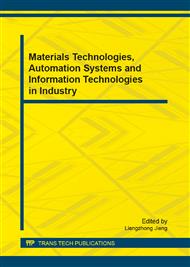p.161
p.166
p.175
p.183
p.188
p.194
p.199
p.205
p.211
Research on Influencing Factors of Cooling Process on Inclining Aluminum Profile Wall
Abstract:
For these Aluminum extrusion products which cross-sectional shape are complex and size diverse, we usually discuss the convective heat transfer on the structural units with a single own geometrical characteristic separately at first, then combine them into a specified profile and reach a systematic uniform cooling design, to achieve a uniform cooling at last. This paper discussed heat transfer at the inclined wall zone with a calculation method of finite element. The considered factors are the spray distance, the flow rate of cooling mediums, the angle of inclination and the way of placement, which influence cooling effects separately. The results show that spray distance has little impact on cooling effects with an optimum range of 60mm to 100mm. As increasing the angle of inclination and flow rate of the cooling medium, profile has a faster and more uneven cooling. In addition, the way of placing profile with its narrow side attached to roller offers a higher cooling rate.
Info:
Periodical:
Pages:
188-193
Citation:
Online since:
August 2013
Authors:
Price:
Сopyright:
© 2013 Trans Tech Publications Ltd. All Rights Reserved
Share:
Citation:


